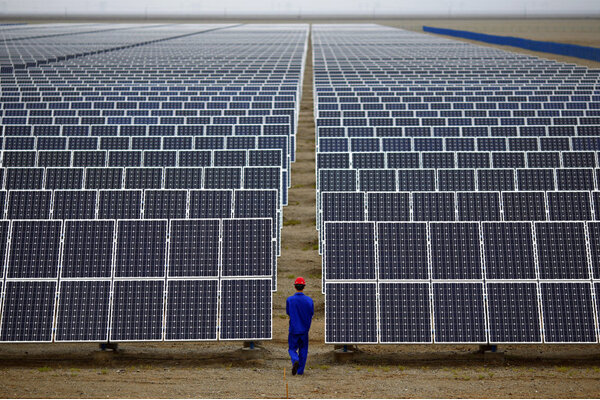Iran's renewable energy capacity reaches 1,520 MW

TEHRAN – Iran's renewable energy capacity has grown significantly under the 14th administration, reaching 1,520 megawatts (MW).
According to IRNA, the country's energy imbalance and the critical need to expand renewable energy use have been a priority for the administration.
President Masoud Pezeshkian has consistently emphasized the importance of renewable energy development, urging immediate intervention to resolve any obstacles to its expansion. This commitment has driven significant growth in renewable energy capacity.
Installed capacity for renewable power plants, which stood at 1,231 MW at the beginning of the current administration, increased by 289 MW to reach 1,520 MW by the end of December. Solar power plants dominate the sector, generating 781.86 MW and accounting for 60 percent of the total capacity. Wind power plants contribute 376.3 MW, representing 29 percent, while small hydroelectric plants produce 104.04 MW, making up 8.0 percent of the renewable energy mix.
Less prominent contributors include biomass power plants, which produce 22.13 MW and hold a two percent share, and expander turbine plants, generating 9.6 MW and accounting for one percent of the total.
Mohsen Tarztalab, Deputy Energy Minister, announced yesterday plans to increase renewable energy capacity to 1,800 MW by the end of the year.
This expansion aligns with the country's strategic goals to diversify energy sources and reduce reliance on fossil fuels.
The Renewable Energy and Energy Efficiency Organization of Iran (SATBA) has identified substantial potential for further development. Assessments indicate that Iran could produce over 20,000 MW of wind energy and 800 MW of biomass energy.
Despite these advancements, challenges remain. As of 2020, Iran had only produced 8.0 gigawatts of renewable energy, highlighting the gap between potential and actual output.
Additionally, renewable energy sources currently constitute less than one percent of the country's total nominal electricity generation capacity.
To address these challenges, the Energy Ministry has implemented programs to improve existing plants and build more small and medium hydroelectric facilities.
Furthermore, the government has set legislative goals to increase the share of renewables and clean power plants to at least five percent of the country's capacity.
These initiatives reflect Iran's commitment to enhancing energy security, reducing greenhouse gas emissions, and meeting domestic electricity demand through sustainable means.
EF/MA
